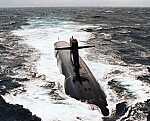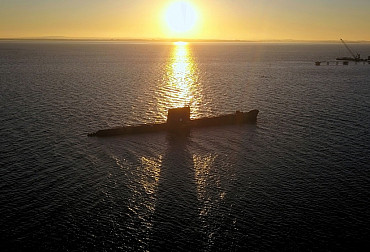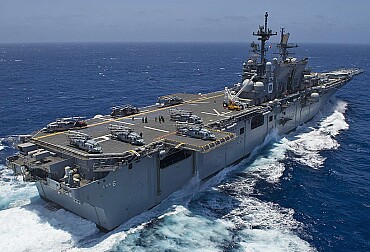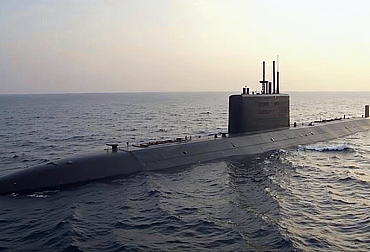Sweden and Finland's membership in NATO: a shift in the balance of power in the Baltic Sea and implications for Russia's Baltic Fleet
The accession of Sweden and Finland to the North Atlantic Alliance represents one of the most significant shifts in European security architecture since the end of the Cold War. Both Nordic countries, traditionally known for their neutrality and restraint towards military alliances, decided to make a historic shift in response to Russia's invasion of Ukraine in 2022. In quick succession, they abandoned their policy of military non-alignment and became full members of NATO, fundamentally altering the military balance in the strategically important Baltic Sea region.
This step has not only symbolic but above all practical implications for the planning and deployment of forces in northeastern Europe. The northward expansion of the alliance structures means that the Baltic Sea is now effectively surrounded by NATO member states, with the exception of Russian territory around the Kaliningrad region and St. Petersburg. This has serious consequences for the Russian Baltic Fleet, which finds itself in a more unfavorable strategic position than at any time since the collapse of the Soviet Union.
Historical background
The strategic importance of the Baltic Sea in European history cannot be underestimated. The region has repeatedly been the scene of military conflicts, where the interests of maritime powers, continental empires, and regionally ambitious forces have clashed. In the context of the 20th century, the Soviet Union's Baltic Fleet played a significant role, especially during World War II. From Moscow's perspective, the scenario is currently repeating itself, with its fleet facing an unfavorable geographical squeeze. As early as 1941–1944, the Axis powers attempted to cripple the Baltic Fleet through anti-submarine networks, mine barriers, and the deployment of patrol boats and aircraft. The German-Finnish cooperation at the time effectively prevented the Soviets from conducting effective naval maneuvers in the Baltic Sea—a situation that now has a geopolitical sense of déjà vu.
After World War II, Finland and Sweden chose the path of neutrality. Under pressure from Soviet demands, Finland adopted a model of "limited sovereignty" (known as Finlandization), while Sweden opted for active neutrality with an emphasis on defending its own territory. Although neither country was a member of any military bloc, after 1991, in the era of the collapse of the bipolar world, a gradual rapprochement with the North Atlantic Alliance began. A key moment was the involvement of both countries in the Partnership for Peace program and their participation in NATO international missions, through which they effectively participated in alliance operations, albeit without collective defense commitments.
After 2014, i.e. after the annexation of Crimea, public and political debate on security guarantees began to change significantly in Finland and Sweden. The strategic position of the Baltic Sea in the European security balance shifted as a result – from an area between East and West, it became an "internal sea of NATO." This means a fundamental revision of Russia's defensive and offensive calculations, as the loss of freedom of movement in this area directly threatens not only Moscow's ability to control access to Kaliningrad, but also its broader geopolitical ambitions in the region.
Impact on the Russian Baltic Fleet
The expansion of NATO to include Sweden and Finland has fundamentally changed the strategic environment in the Baltic Sea and significantly affected the maneuvering space of the Russian Baltic Fleet. This component of the Russian Navy has traditionally operated from ports in Kaliningrad and Baltiysk, in an environment that, although subject to certain restrictions since the 1990s, has nevertheless allowed it to maintain a degree of freedom of movement. However, with Finland and Sweden joining NATO, the Baltic Sea is now virtually closed from a military-strategic point of view, with all its shores under the control of Alliance member states. This means a significant reduction in the operational space of the Russian Navy, which now finds itself in an environment of potential complete blockade.
The new geographical reality also strengthens the spatial interconnection of NATO's defense structures in the region. In the event of a military conflict, synergies can be expected between the forces of Poland, the Baltic states, Finland, and Sweden, which can create a strong and interconnected defense zone capable of detecting, tracking, and destroying Russian units already in their starting positions. The Baltic Fleet is thus not only severely limited in its power projection, but also exposed to a higher risk of destruction in the early stages of any conflict. From a command and logistics perspective, it is also vulnerable given that the Kaliningrad region is an isolated exclave with no direct land connection to the mainland. The possibility of a rapid alliance blockade of sea lanes, supported by extended radar and sonar coverage, thus poses a fundamental strategic problem that the Kremlin must address either by redirecting its investments or by reevaluating the very role of the Baltic Fleet in the future.
Military capabilities
The naval balance in the Baltic Sea has shifted significantly with NATO enlargement. Although the Russian Federation has traditionally viewed the Baltic Fleet as an important tool for projecting its power in northeastern Europe, it now faces militarily advanced adversaries with greater collective strength. The Polish Navy, although limited in numbers, has relatively modern vessels, including two corvettes, the Kaszub and Ślązak, three Orkan-class missile boats, two Oliver Hazard Perry frigates (these frigates and the Kaszub corvette will be replaced in the near future by three Arrowhead 140 frigates), one Kilo-class submarine, several minesweepers, and other support vessels. The Finnish Navy relies on smaller but highly maneuverable units, particularly the modern Hamina and Rauma class missile boats (four each), and expects to introduce Pohjanmaa class corvettes in the near future (the first has already been launched). Finland also has five minelayers, 16 minesweepers, and two patrol boats. Sweden has a strong coastal navy, which includes three modernized Gotland-class submarines and two Södermanland-class submarines. The core of the Swedish Navy's surface forces is the five-vessel Visby class of stealth corvettes. Another significant force is the six Stockholm and Gothenburg class corvettes. The navies of the Baltic states only have minesweepers and patrol vessels at their disposal.
Land-based anti-ship systems are an important element of regional balance. Poland has Norwegian-made mobile NDR batteries with a range of over 185 km, deployed mainly in coastal missile units in the Hel region. Important for Poland's defense capabilities in the Baltic region is this year's announcement that the existing anti-ship missile unit will be expanded into a brigade. Finland has Swedish MTO 85M and Israeli Gabriel V missiles. Sweden also has coastal missile units with domestically modified RBS15 Mk3 and Robot 17 missiles, which, combined with the island's topography, create a deadly environment for enemy surface units. The only Baltic country that can boast the above-mentioned category of weapons is Estonia, which has Blue Spear missiles, a derivative of the Israeli Gabriel V. In the case of Sweden, it is also worth mentioning the ability of Gripen aircraft to use anti-ship missiles. This combined land, air, and sea threat capability allows for a rapid response to actions by the Russian Baltic Fleet.
In 2025, the Russian Federation's Baltic Fleet will have a diverse range of surface units at its disposal. At its core is one Project 959 guided missile destroyer, named Nastroychev, and two Project 1154 missile frigates, namely Fearless and Yaroslav Mudry. The submarine forces are represented by a single diesel-electric submarine of the Kilo class (Project 877), B-806 Dimitrov. Four multi-purpose corvettes of the Stereguščij class (Project 20380), namely Stereguščij, Soobrazitielnyj, Bojkij and Stojkij, which are complemented by three Karakurt-class missile corvettes (project 22800) named Odincovo, Sovětsk and Mytišči.
The fleet also includes several older vessels, notably four Project 1234.1 missile corvettes – Zyb, Geyzer, Passat, and Liven – and six Project 1241 (Tarantul) missile boats, including Kuzněck, R-257, Zarečnyj, Dimitrograd, Moršansk, and Čuvašsko. Six corvettes of project 133.1, designed for anti-submarine warfare – Urengoj, Kazanec, Zelenodolsk, Aleksin, Kalmykia, and Kabardino-Balkaria – also represent a significant part of the fleet. The support part of the fleet consists of a number of minesweepers and other smaller units.
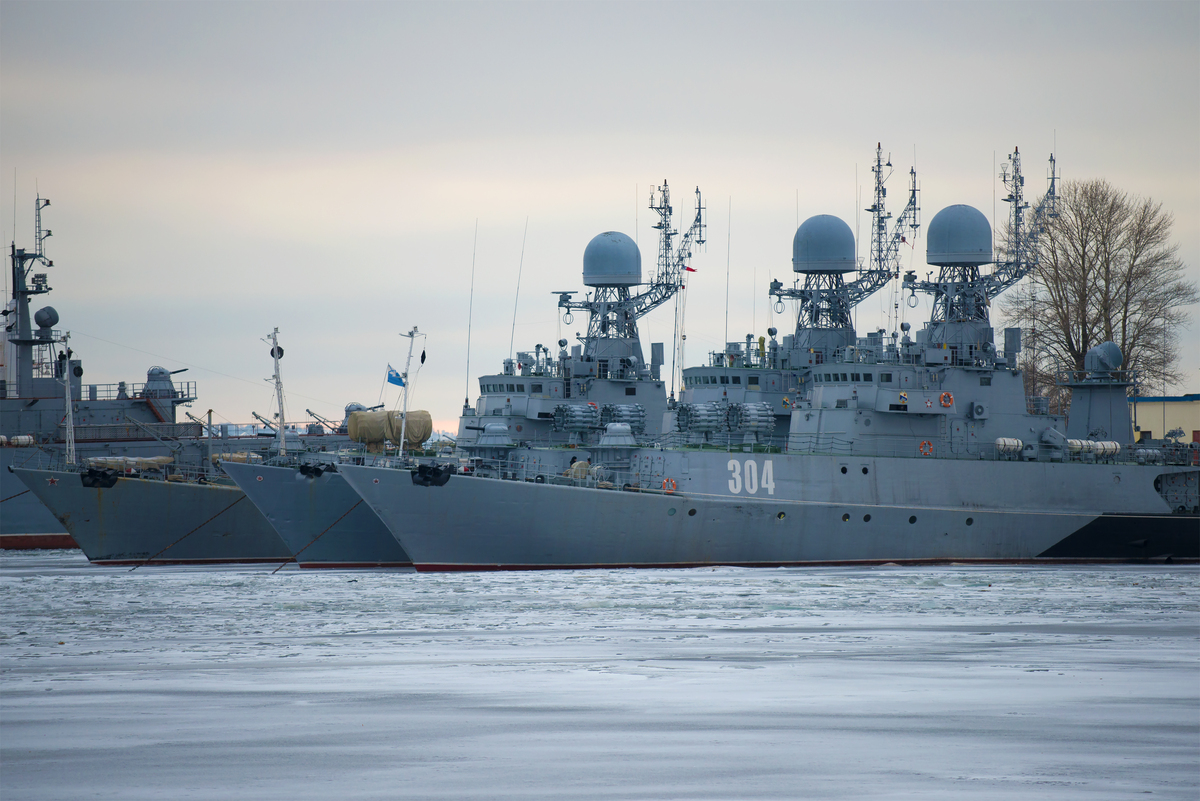
Possible future developments
Given the new reality in the Baltic Sea, Russia faces a strategic choice on how to approach the future of its Baltic Fleet and its overall military presence in the region. The first possible scenario is to limit the projection of force and shift to a strategy of defensive coastal security. This would mean the gradual transfer of larger and more valuable surface units to other fleets – primarily to the Northern Fleet or to reinforce the weakened Black Sea Fleet, which has suffered significant losses since 2022. In this scenario, the role of the Baltic Fleet would likely be taken over by mobile coastal anti-ship systems, coastal artillery, minefields, surface and underwater drones, etc. This approach would reduce the risk of losing valuable vessels and focus on defense rather than dominance.
The second option is an escalation strategy aimed at restoring the balance of power in the region. This would involve investing in new naval capabilities, strengthening air defenses, massively militarizing Kaliningrad, and possibly expanding the military presence in Belarus. However, this scenario is costly and geopolitically risky, as it could trigger further NATO reinforcement in the region and contribute to destabilizing the wider area between the Baltic and Black Seas.
The third option is strategic de-escalation and a bet on geopolitical calm. Russia could decide not to take any major military steps and instead present itself as restrained, stable, and "reasonable." Given the military imbalance in the region, this approach would have a psychological dimension: Moscow would seek to send a signal of self-confidence rather than weakness. The aim would be to prevent further militarization of the region and strengthen its voice in the diplomatic arena.
However, from the perspective of alliance planning, further crisis scenarios cannot be ruled out, including incidents involving aircraft or naval units, targeted disinformation operations against Finland or Sweden, and even attempts to exert military pressure on vulnerable areas such as the Suwalki Corridor. In such a case, the Baltic Sea would be one of the first battlefields – not only because of its strategic importance, but also because it is a relatively enclosed space where it is difficult to hide preparations for larger operations. For NATO, this means the need for a permanent presence, securing logistical routes, and building rapid response capabilities on the potential northeastern maritime front.




